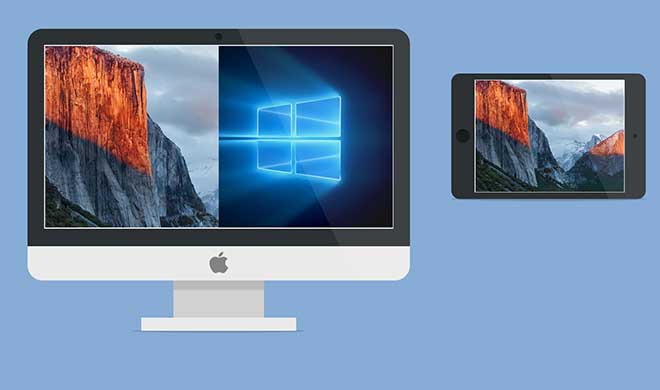Macec Sidecar for MacOS turns your iPad into a second display with just a few clicks but is limited to certain Macs and iPads. Fortunately, some third-party apps can help fill the gap. Two monitors are better than one and with macOS Catalina, you can turn your iPad into a second display with just a few clicks thanks to a new feature known as Sidecar.
But Sidecar is limited to certain Macs and iPads, which is a shame if you have an older device (or a Windows PC). Fortunately, some third-party apps can help fill the gap on other PCs, Macs, iPads and Android tablets.
Also read- How to use the File app in iOS 13 and iPadOS
The ideal option- Sidecar on macOS Catalina
Sidecar is without doubt is the best option to turn your iPad into a second display. So, if you have a Mac and an iPad for the last three or four years, we recommend trying it first. (If your devices are older, go to the next section.)
To connect the iPad as a display, connect the iPad to the Mac via USB or, to do it wirelessly, make sure that Bluetooth, Wi-Fi, and Handoff are active. You will also need to access the same Apple ID on both devices.
Then, click the AirPlay button in your Mac’s menu bar and select your iPad from the list. The icon will change and clicking the menu again will offer you a series of options. You can mirror the display of your Mac or extend it, show or hide the sidebar and the Touch Bar that appears on the iPad or disconnect the tablet.
You can use Sidecar either by cable or wireless, but if you want to switch between them, you have to disconnect and reconnect using the AirPlay menu. Apple says it should work wireless as long as the iPad is at a maximum distance of 10 meters (30 feet) from the Mac and you can even use your Apple Pencil to sign documents and design supported apps. See the Apple Sidecar manual for more details.
The economic and multi-platform option- Splashtop Wired XDisplay
If your Mac or iPad is not supported by Sidecar (or you are a Windows and Android user) Splashtop Wired XDisplay is a third-party app that can turn your tablet into a second monitor. It only works when connected via USB and is not the smoothest option I’ve used, but it does its job well without costing much.
Splashtop Wired XDisplay has two components- a desktop agent that runs in the background on your PC or Mac and an app for iPad or an Android app that runs on your tablet. (The iPad app seems to be completely free, while the Android app costs € 7, although there is a free trial version that works 10 minutes at a time.)
After installing the desktop and tablet apps, make sure the desktop app is running on the computer, connect the tablet to the computer with a USB cable, then launch the XDisplay app on the tablet. It will establish a connection to your computer and an empty tablet will appear on your tablet. Rearrange your monitors from your computer screen settings, drag windows to your tablet and use it as a second monitor for increased productivity.
Splashtop Wired XDisplay works decently well, at least in my experience with an iPad and a Windows PC. There is considerable latency and I had some problems when I got stuck in Mirrored mode on one of my computers, but for its “free” price, it’s worth trying. (The € 7 Android app has mixed reviews and, if you’re going to pay, I think it’s worth paying a little more and using our paid recommendation, Duet Display, below.)
A more expensive but better alternative- Duet Display
Splashtop Wired XDisplay is decent for being a free option, but if you want the smoothest experience possible, Duet Display is the best app I’ve tested for turning an iPad into a second monitor.
Like Splashtop, it has a tablet app that connects to a companion app on your computer. The Duet Display desktop app is free, but the iOS app costs € 10 and the Android app costs € 20 (since it is brand new at the time of writing).
That version of the app only works when connected via USB, but adds a Touch Bar to any Mac, supports iPad keyboards and adds touch control to your Windows or Mac apps on the tablet screen.
If you want more features, there is also an in-app subscription “Duet Air” that adds wireless connectivity, remote desktop and improved graphics for € 20 a year and a “Duet Pro” subscription which adds design features for € 30 year.
After installing both desktop and tablet apps, make sure the Duet Display desktop app is running in the background on the PC, then connect the tablet via USB and launch the Duet Display mobile app. It should immediately connect to your computer and you will see a desktop appear, ready for use.
Finally, click on the Duet Display icon on the PC to access some other settings, such as the framerate and resolution used by the tablet. For me, the default settings worked great, but if you find that it’s a bit slow on an older laptop, it can reduce the resolution, framerate or power consumption from this window.
If you have a Duet Air subscription, you can connect Duet Display wirelessly by opening the desktop app, going to Advanced Settings and clicking the Wireless (in Windows) or Air (in macOS) tab. The tablet should appear in the list and click on it to connect. (If not displayed, you can manually log in by typing the tablet’s IP address.)
Duet Display may be more expensive than its competitors, but in my experience, it was by far the smoothest experience. If you regularly use your iPad as a second monitor, it’s worth it.

